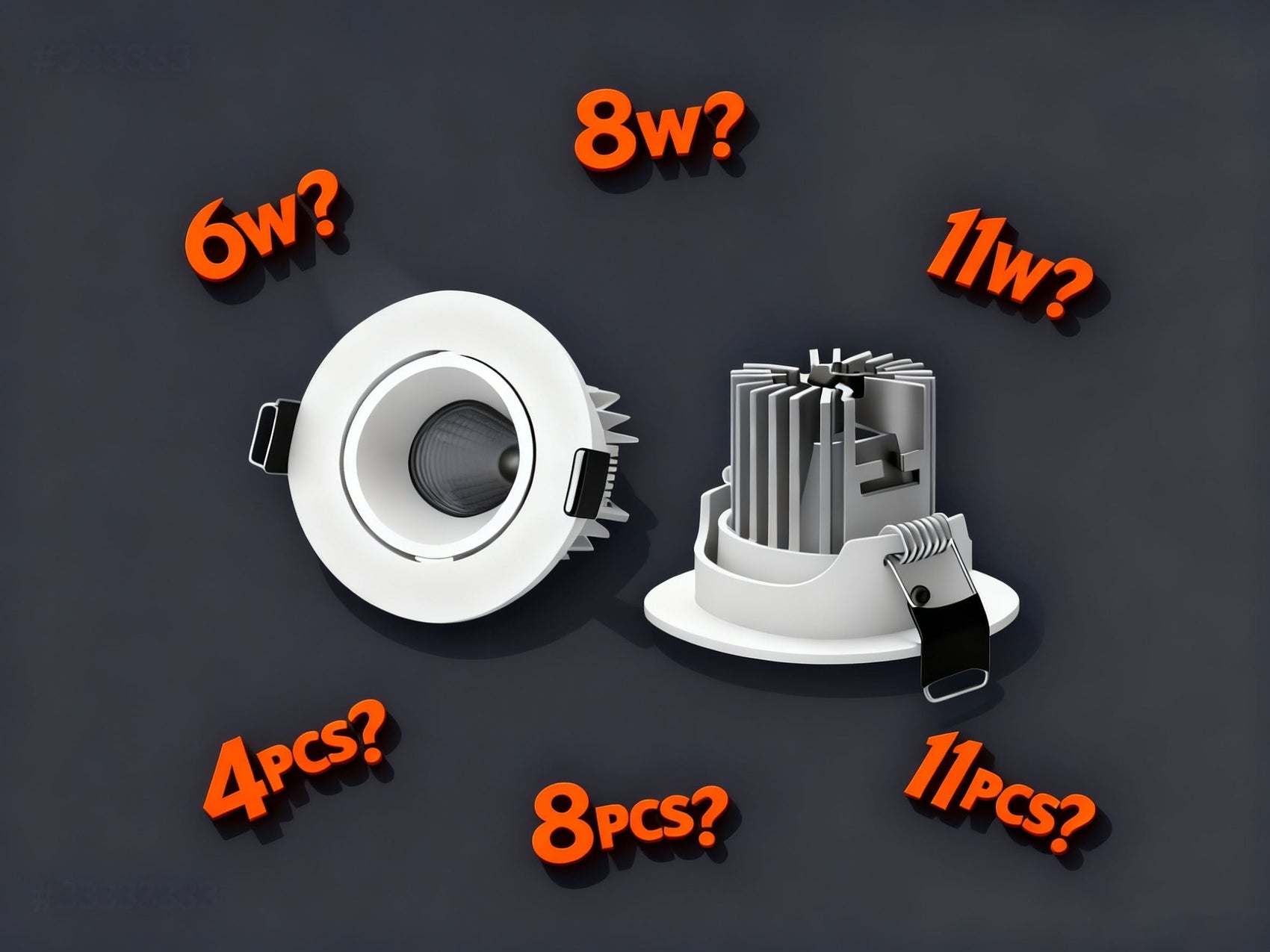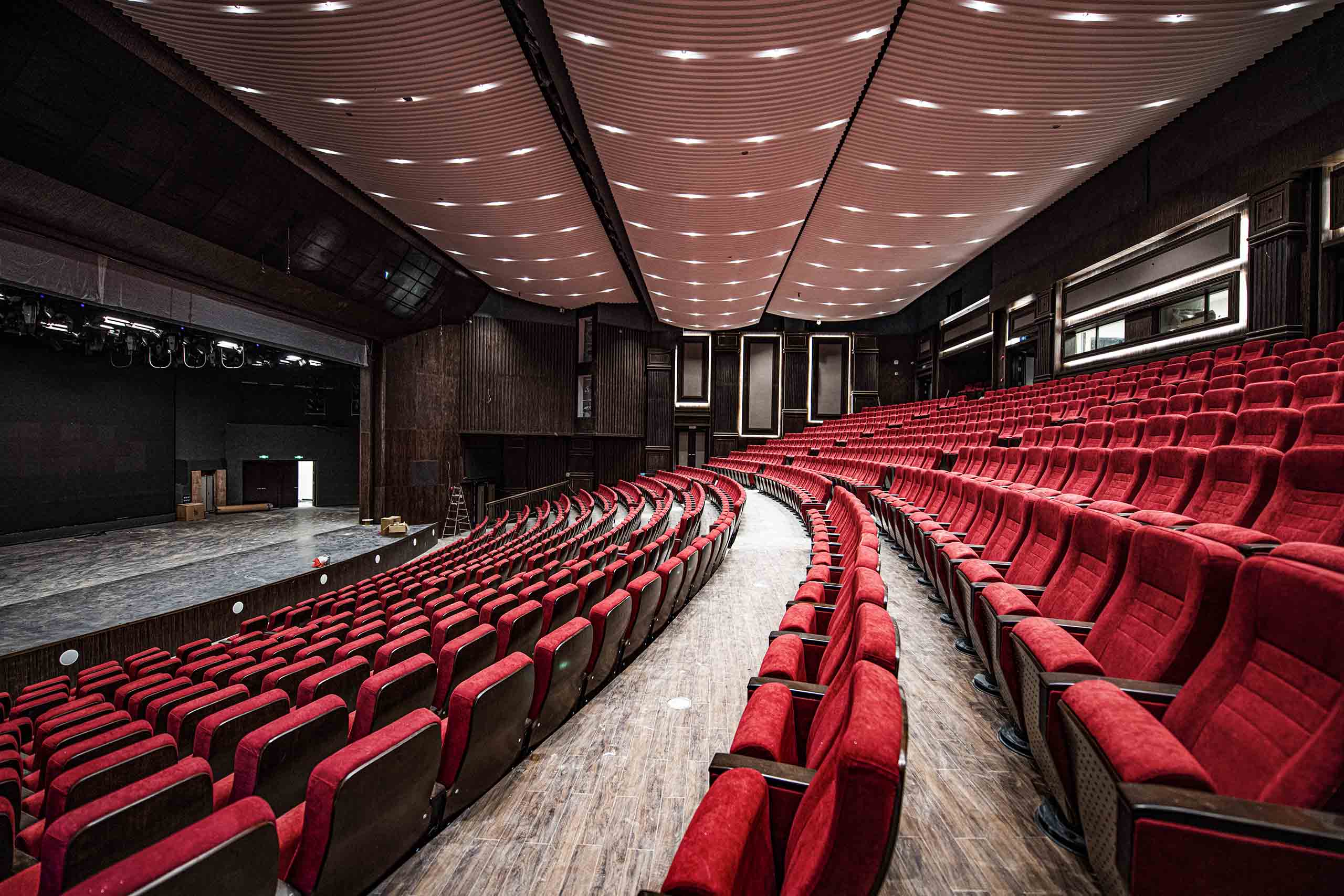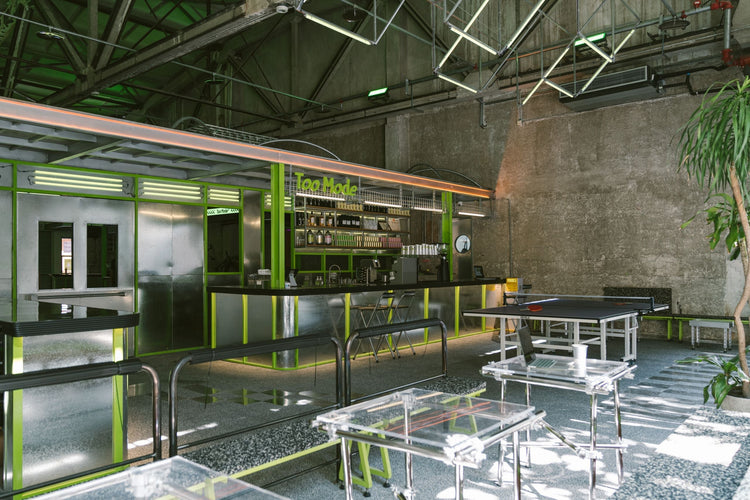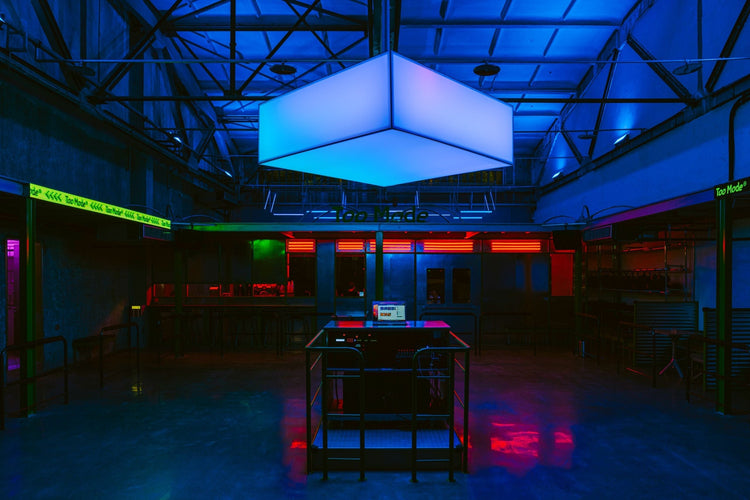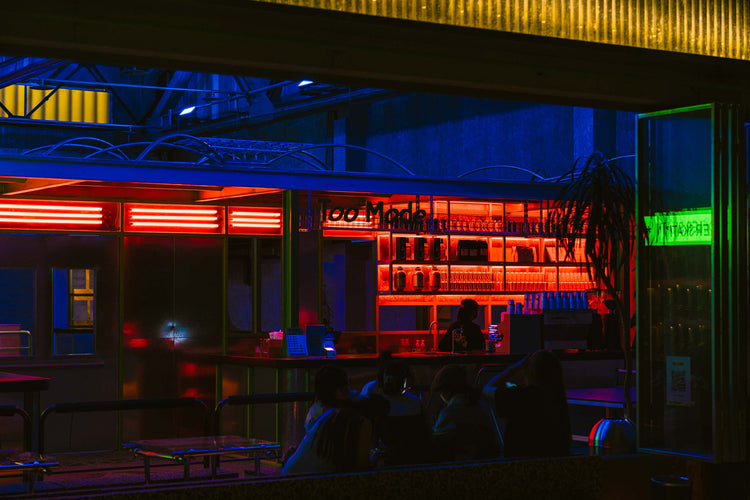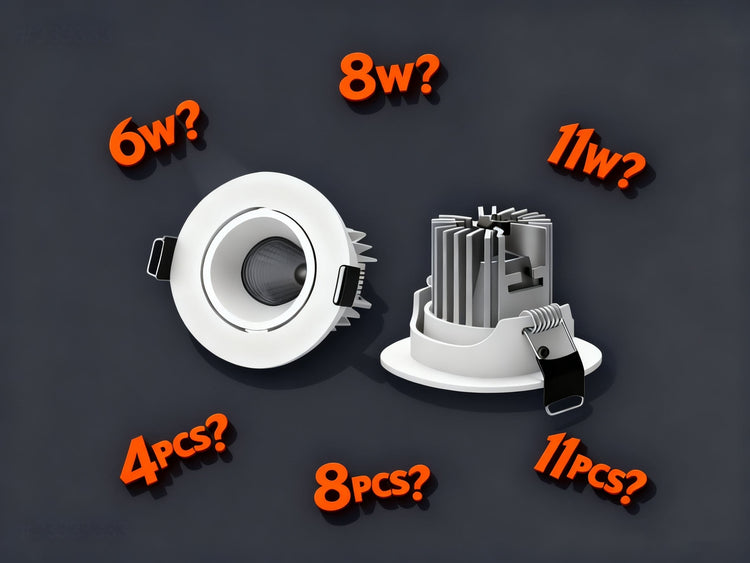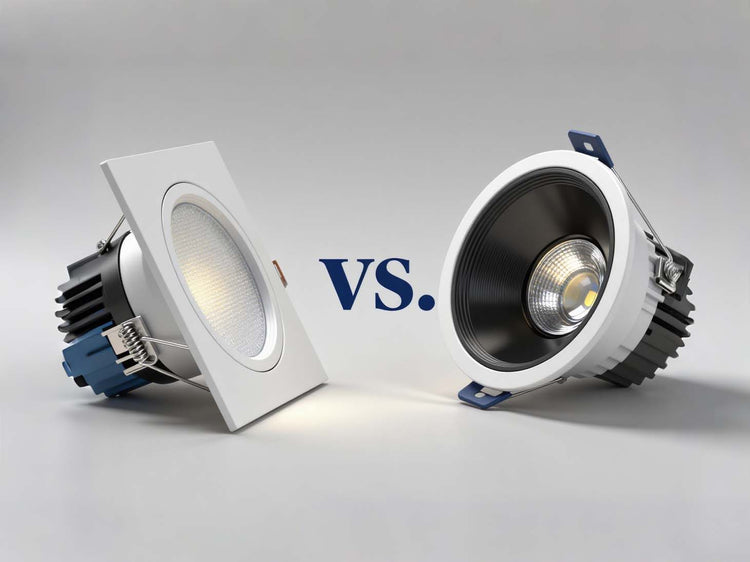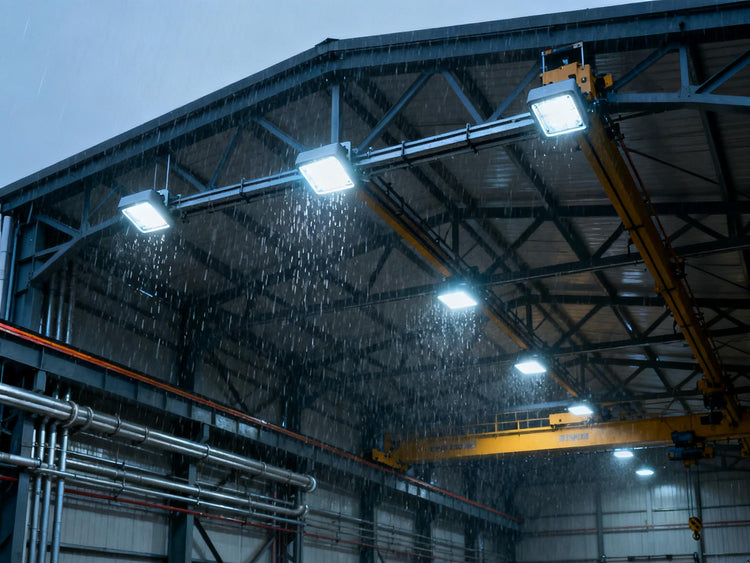Does your home or shop still feel dim even with numerous lights? Are spotlights causing uncomfortable glare? Most lighting issues stem from incorrect fixture selection and miscalculated quantities.
In interior lighting design, downlights and spotlights are fundamental. Choosing the right type and calculating the correct number is crucial for achieving optimal illumination and ambiance. This guide details the selection process and the calculations needed.
1. Understanding Key Lighting Parameters: Lumens, Beam Angle, CCT, CRI
Before calculating, familiarize yourself with these essential terms. They form the scientific basis for creating an ideal lighting environment and are key for communicating with designers or suppliers.
- Lumens (lm): Measure the total quantity of visible light emitted by a source (perceived "brightness"). Unlike watts, which only measure energy consumption, lumens measure actual light output. Focus on "luminous efficacy" (lm/W) for efficiency.
- Beam Angle: Determines how light is distributed. A narrow angle creates a concentrated, high-contrast spot, while a wide angle provides broad, even illumination.
- Color Temperature (CCT): Measured in Kelvin (K), it defines the light's warmth or coolness, influencing mood. Lower values (2700K–3000K) are warm and relaxing; higher values (5000K–6500K) are cool and alerting.
- Color Rendering Index (CRI): Rates (on a scale up to 100) how accurately a light source reveals an object's true colors. A higher CRI is essential for vibrant, true-to-life color perception.
2. What is Lux and Why Does It Matter?
Lux defines illuminance, the amount of light (lumens) falling on a surface area (square meter). Essentially, 1 Lux = 1 Lumen per square meter (lm/m²).
Why it Matters: Lux provides an objective, measurable standard for lighting requirements. It answers "How bright does this space need to be?" Insufficient lux causes eye strain and safety risks, while excessive lux creates glare and wastes energy.
3. Applying Lux in Lighting Design?
The fundamental step is determining the required lux level for a space. This informs the core calculation for the total light output needed:
Total Lumens Required = Area (m²) × Target Lux Level
This formula translates a desired illuminance into the precise quantity of light required.
4. Downlights vs. Spotlights: What's the Difference?
-
Downlights (surface-mounted or recessed) provide wide, uniform, soft light for ambient (general) illumination. They are ideal for evenly lighting entire spaces like living rooms, bedrooms, and hallways.
-
Spotlights (surface-mounted or recessed) emit focused, directional light for accent lighting. They are used to highlight specific objects, creating dramatic light and shadow contrasts.
- Applications: Highlighting artwork in homes, retail displays, or museum exhibits.
5. Key Parameter Comparison
| Term | Definition & Application | Downlight vs. Spotlight Focus |
| Lumens | Total light output required for a space. | Downlights for ambient light; Spotlights for accent light. |
| Beam Angle | Spread of light from the fixture. | Downlights: Wide (60°-120°). Spotlights: Narrow (15°-45°). |
| CCT | Warmth or coolness of the light (2700K-6500K). | Consistency within a space is generally recommended. |
| CRI | Color accuracy of the light (scale up to 100). | Spotlights often require a higher CRI (≥90) for true color rendering. |
6. Step-by-Step Guide to Calculating Fixture Quantities
Step 1: Determine Illuminance Requirements
|
Space |
Recommended Illuminance (lux) |
Converted Lumen (lm/㎡) |
|
Bedroom/Corridor |
100-150 |
300-450 |
|
Living Room/Kitchen |
150-300 |
450-900 |
|
Study/Bathroom |
300-500 |
900-1500 |
|
Art Gallery |
500+ |
1500+ |
Step 2: Calculate Total Lumen Requirement
Formula: Space Area (m²) × Target Lumen Value (lm/m²) = Total Required Lumens
- Example: A 20 m² living room (target 450 lm/m²) → 20 × 450 = 9,000 lumens
Step 3: Allocate quantities for downlights and spotlights
Division of Roles:
-
Downlights handle ~70% of ambient lighting.
- Example: 9,000 lm × 70% = 6,300 lm
-
Spotlights handle ~30% of accent lighting.
- Example: 9,000 lm × 30% = 2,700 lm
Quantity Calculation:
-
Number of Downlights = Total Downlight Lumens ÷ Lumen Output per Downlight
- Example: Using 800 lm downlights → 6,300 ÷ 800 ≈ 8 units
-
Number of Spotlights = Total Spotlight Lumens ÷ Lumen Output per Spotlight
- Example: Using 350 lm spotlights → 2,700 ÷ 350 ≈ 8 units
Step 4: A Quick Guide to Choosing Between Downlight and Spotlight

7. Other Critical Factors to Consider
- Ceiling Height: Higher ceilings result in more light loss over distance. Compensate by using higher-wattage/lumen fixtures or increasing the quantity. A general rule: for every 1-meter increase in height, consider increasing fixture power by 1-2W or adding 1-2 extra fixtures.
- Wall and Floor Colors: Light-colored surfaces reflect light, enhancing brightness (potentially allowing for fewer fixtures). Dark surfaces absorb light, requiring more fixtures to achieve the same illuminance.
- Usage Scenarios: Task-intensive activities (reading, working) demand higher lux levels and more fixtures. Ambient, relaxing settings can use lower lux levels and fewer fixtures.
Conclusion: A Strategic Approach to Lighting Design
Successful lighting design is a deliberate process. It begins with understanding the tools—downlights for ambient light, spotlights for accent light and analyzing the space's function.
The next step is precise calculation, considering required lux, total lumens, and fixture allocation, while also factoring in room-specific conditions like ceiling height and surface colors. This systematic method ensures a final plan that masterfully balances functionality, visual comfort, and aesthetic atmosphere.
Ready to put these principles into practice? Explore our precision engineered downlight and spotlight collections at Lumosmith.com to find the perfect tools for your next project.

